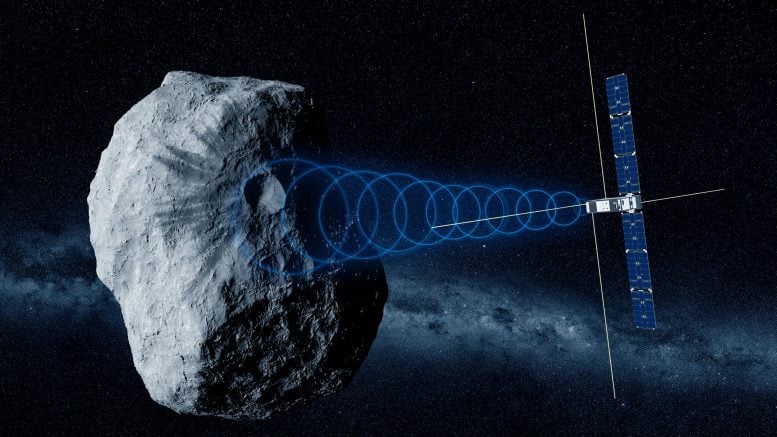
Due to launch in 2024, Hera will travel to the Didymos pair of near-Earth asteroids to test planetary defense, find out more about asteroids, and demonstrate novel technologies. Hera will carry two CubeSats that will get up close and personal with the asteroids. This artist’s impression shows the Juventas CubeSat carrying out one of its main tasks – using radio waves to study the interior structure of the smaller asteroid, Dimorphos. Credit: ESA/Science Office
ESA’s Juventas CubeSat will house the smallest space radar, JuRa, for the Hera mission, aiming to image inside the asteroid Dimorphos. Developed by IPAG and EmTroniX, it builds upon technology from ESA’s previous Rosetta mission.
The smallest radar to fly in space has been delivered to ESA for integration aboard the miniature Juventas CubeSat, part of ESA’s Hera mission for planetary defense. The radar will perform the first radar imaging of an asteroid, peering deep beneath the surface of Dimorphos – the Great Pyramid-sized body whose orbit was shifted last year by the impact of NASA’s DART spacecraft.
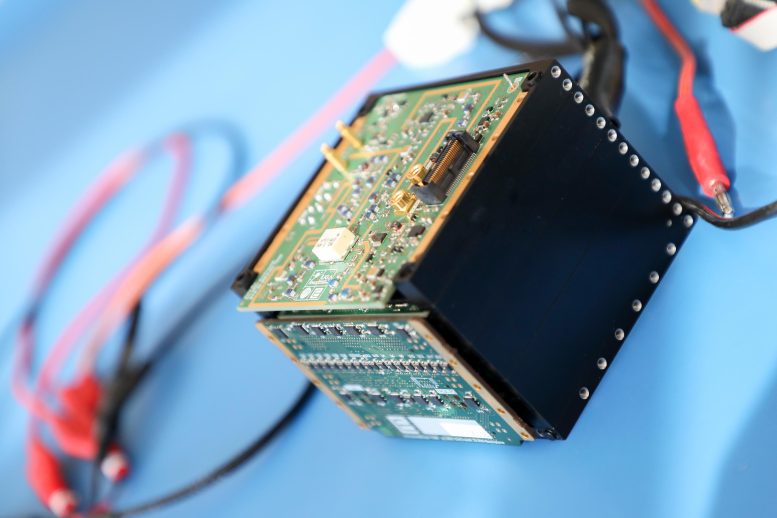
This 10-cm box will make history as the smallest radar instrument to be flown in space – and the very first radar to probe the interior of an asteroid. Its target? The Dimorphos asteroid, which on the night of September 26, 2022, had its orbit diverted and a vast 10,000 km plume sent out into space by collision with NASA’s DART mission. Credit: JuRA Team / UGA
“This delivery marks a definite milestone,” comments Alain Hérique of Institut de Planétologie et d’Astrophysique de Grenoble (IPAG) at the University Grenoble Alpes in France, the instrument’s principal investigator.
“We have been working hard in recent weeks to finalize the radar for its handover. But this is far from the end of our involvement. IPAG and our project partners will be following the process of integration, especially in terms of connection with the rest of the CubeSat, to optimize the performance of the finished instrument, and to calibrate its performance to ensure we interpret our science data as best we can once we are in space.
“Looking ahead, we will also be working on our operating procedures, to try out how we will be operating the instrument in practice, including hardware-in-the-loop testing where we will be commanding the radar via Hera and its CubeSat down on the ground.”
Instrument’s Features and Collaboration
Scheduled to fly to the Didymos binary asteroid system with ESA’s Hera mission for planetary defense in 2024, the compact radar aboard the Juventas CubeSat will perform the first-ever radar sounding inside an asteroid. Juventas will peer up to 100 m deep within the 160-m-diameter Dimorphos moonlet of the 780-m-diameter Didymos asteroid.
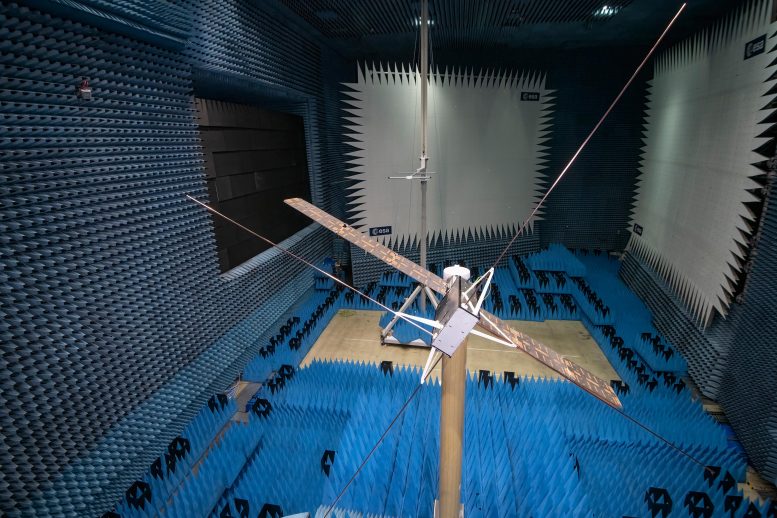
Testing the Juventas CubeSat radar system in ESA’s Hertz chamber during November 2021. Part of ESA’s Hera mission to the Didymos asteroid system, the 6-unit CubeSat will deploy a quartet of 1.5 m long antennas. This is much much longer than the spacecraft body itself, so the radar testing incorporates a structural model of Juventas to help investigate how it may affect the antenna signals. The test team is using Hertz to measure the entire spherical radiation pattern around the antennas as well as the total radiated power. Credit: ESA-P. de Maagt
CubeSats are mini-satellites built up from standardized 10-cm boxes. Juventas is a ‘6-unit’ CubeSat, measuring 10x20x30 cm, while the Juventas radar instrument – JuRa – for short measures 9.5×9.5×9.5 cm across, able to fit within a single CubeSat unit, along with a quartet of 1.5 m-long radar antennas – which will deploy like metal tape measures and have been manufactured by Astronika in Poland.
JuRa’s radar electronics are the responsibility of EmTroniX in Luxembourg, a company that initially developed automotive electronics before expanding into designing and producing payloads and avionics for ‘New Space’ missions.
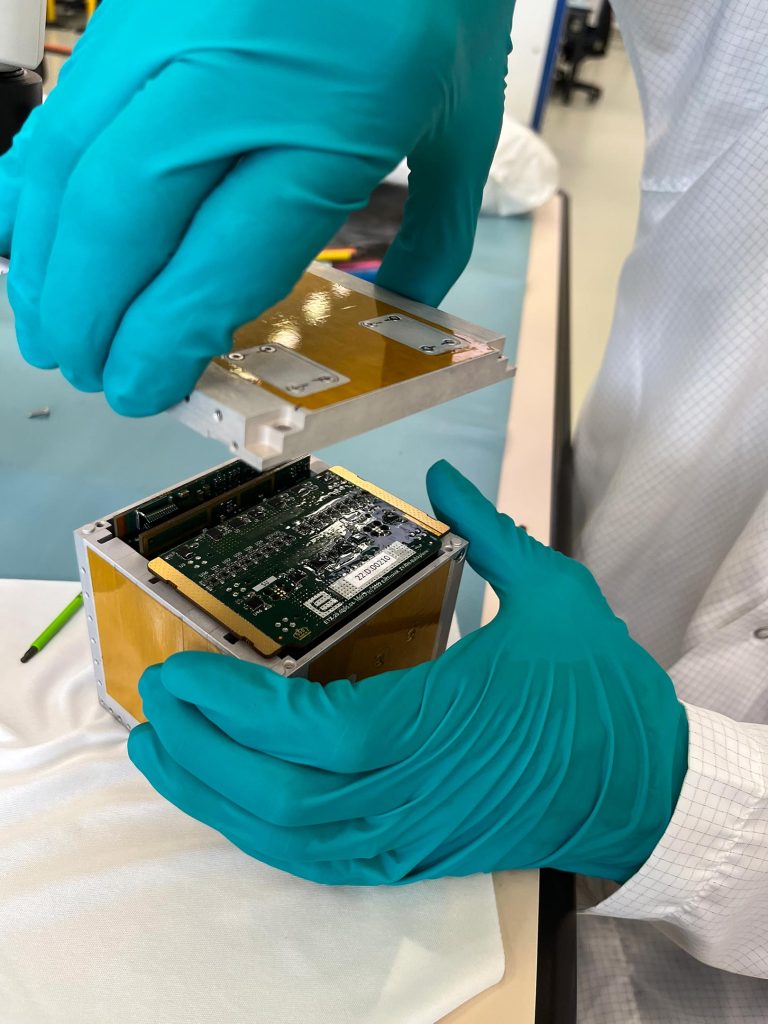
Hera’s JuRA mini-radar being enclosed within its packaging at EmTroniX in Luxembourg. JuRA will fly on the Juventas CubeSat aboard ESA’s Hera asteroid mission. Credit: EmTroniX
“It feels good to deliver something to our customer, but it will feel even better once everything is fully integrated and tested,” comments Cedric Lorant, EmTroniX co-founder and CEO.
“Once JuRa is integrated with the rest of the Juventas CubeSat, and we perform remaining tweaks such as re-flashing it to the latest firmware, then we will assess how the instrument performs within its working environment.”
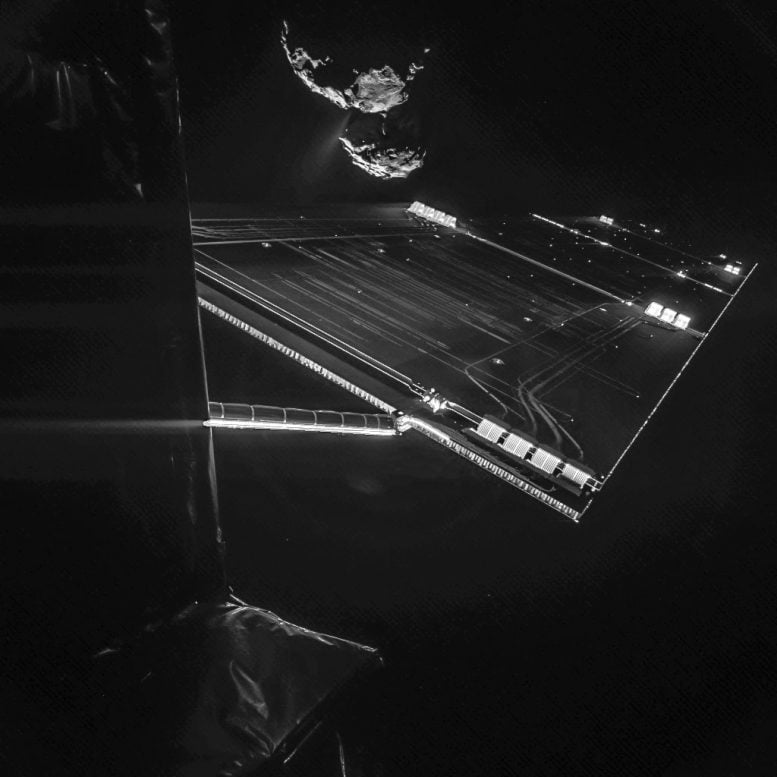
Using the CIVA camera on Rosetta’s Philae lander, the spacecraft have snapped a ‘selfie’ at comet 67P/Churyumov–Gerasimenko. The image was taken on September 7, 2014, from a distance of about 50 km from the comet, and captures the side of the Rosetta spacecraft and one of Rosetta’s 14 m-long solar wings, with 67P/C-G in the background. Two images with different exposure times were combined to bring out the faint details in this very high contrast situation. Credit: ESA/Rosetta/Philae/CIVA
Legacy and Expectations
Planned to perform at least 45 hours of operations during the two-month working life of Juventas, JuRa incorporates some of the latest electronic components, but they had to undergo painstaking radiation testing ahead of delivery to ESA, because the space beyond Earth orbit is riven with charged particles that can degrade electronics.
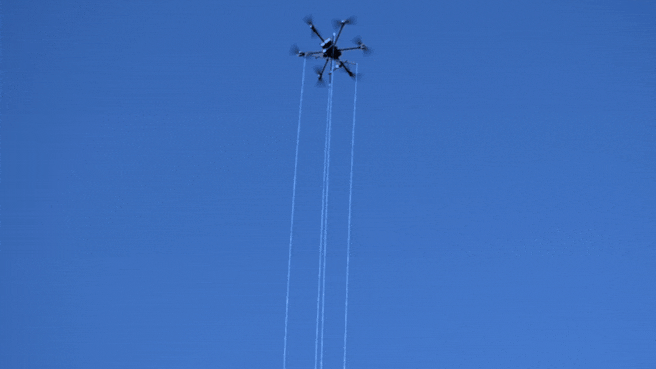
This drone hauled a model of the Juventas CubeSat high into the air, as a practical test of the antennas designed to perform the first radar sounding of the interior of an asteroid. Credit: TU Dresden
The JuRa radar design – developed in IPAG in partnership with the Chair for Radio Frequency and Photonics Engineering of Technical University Dresden – is derived from a previous space radar flown on ESA’s Rosetta mission, which plumbed the depths of comet 67P/Churyumov–Gerasimenko.
IPAG has also worked on radar systems for other space missions including NASA’s Mars Reconnaissance Orbiter and ESA’s Juice.
Meet Hera, our very own asteroid detective. Together with two CubeSats – Milani the rock decoder and Juventas the radar visionary – Hera is off on an adventure to explore Didymos, a double asteroid system that is typical of the thousands that pose an impact risk to planet Earth.

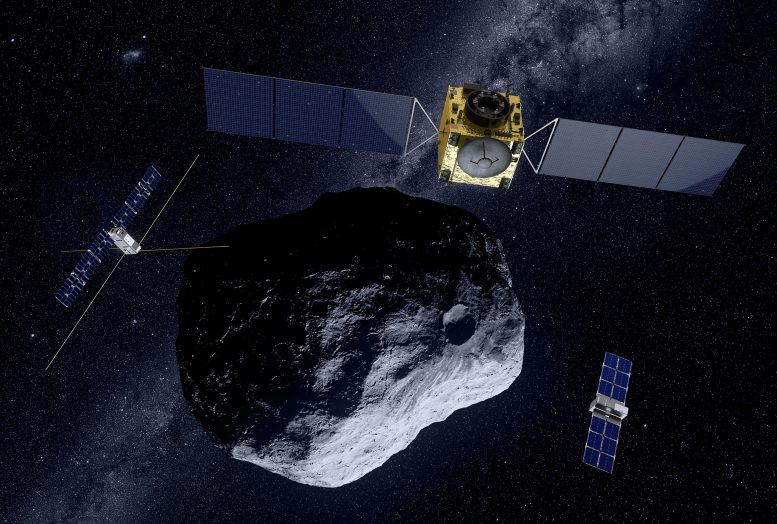


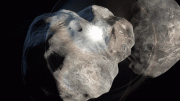
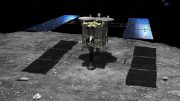
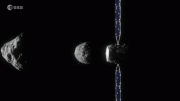


Be the first to comment on "ESA’s Hera Mission: Mini-Radar Will Probe Asteroid’s Heart"